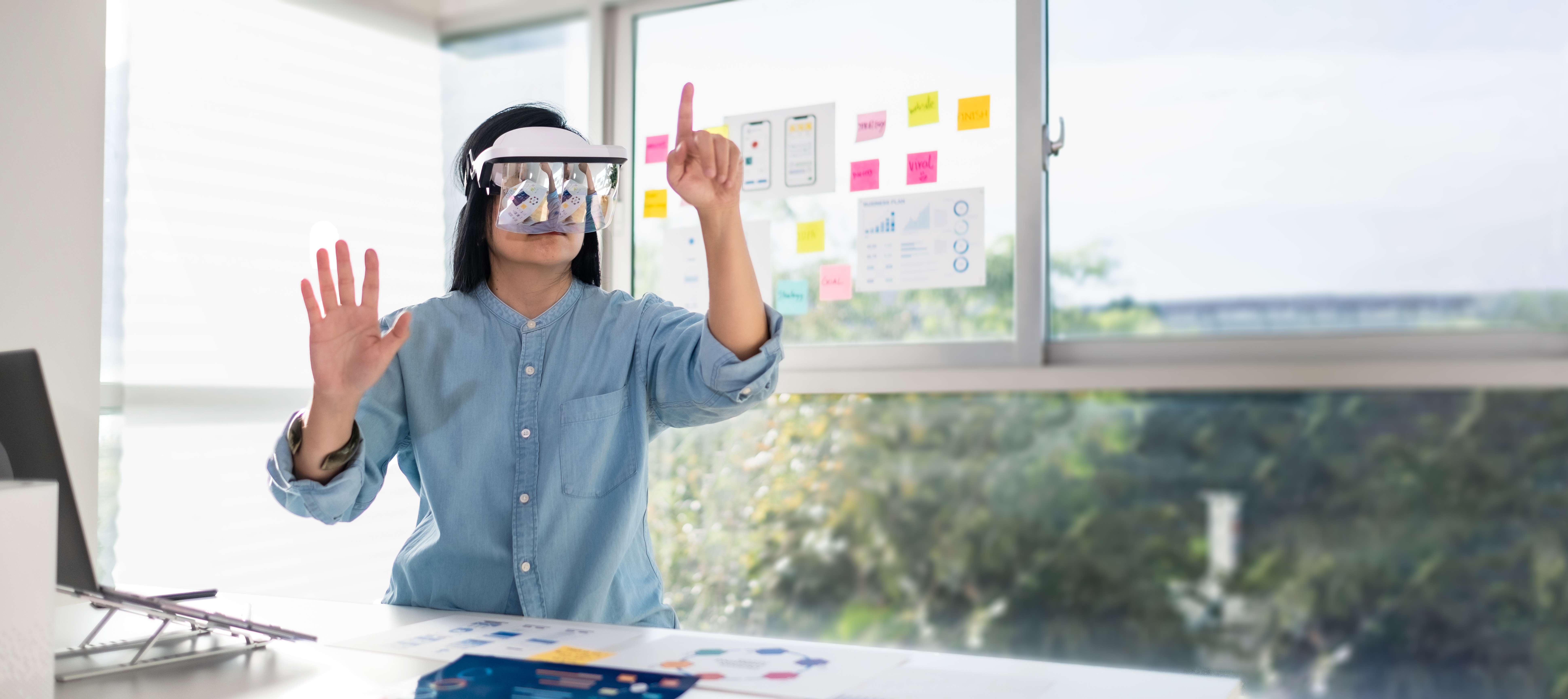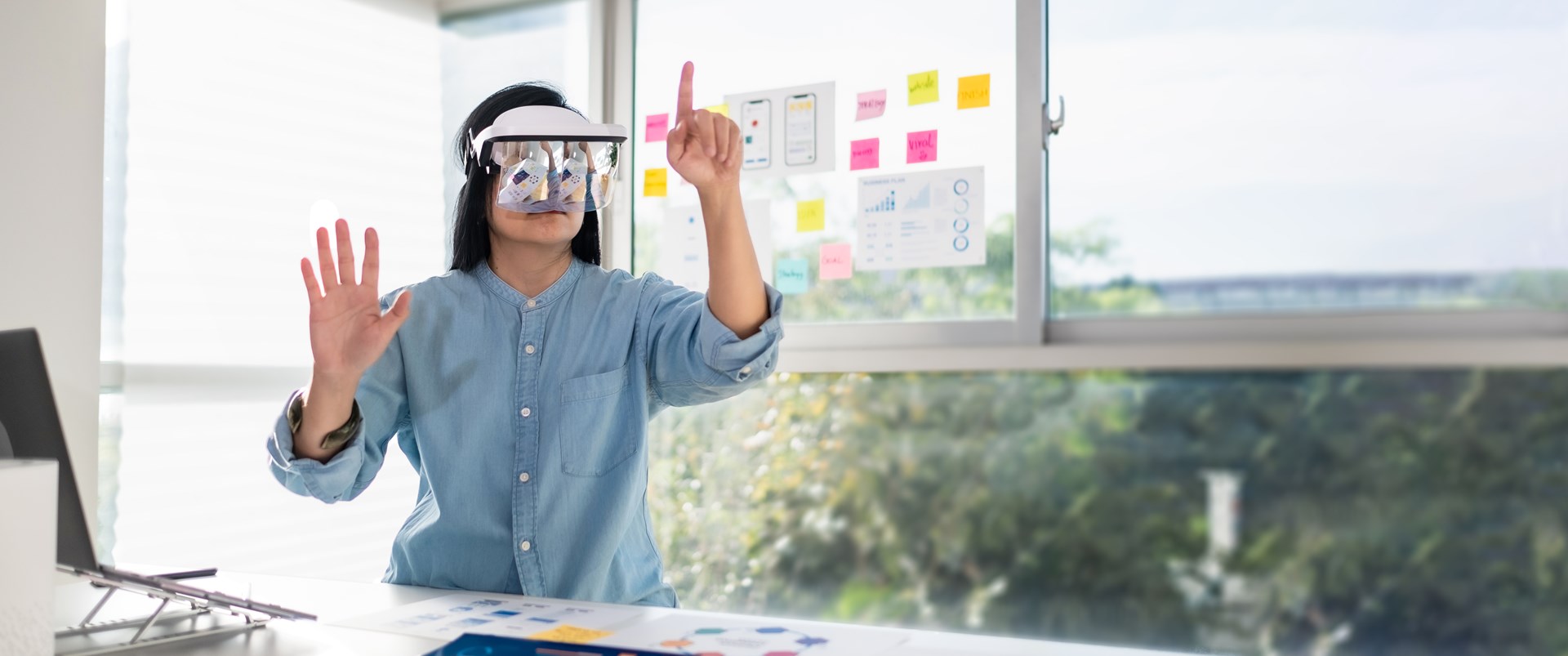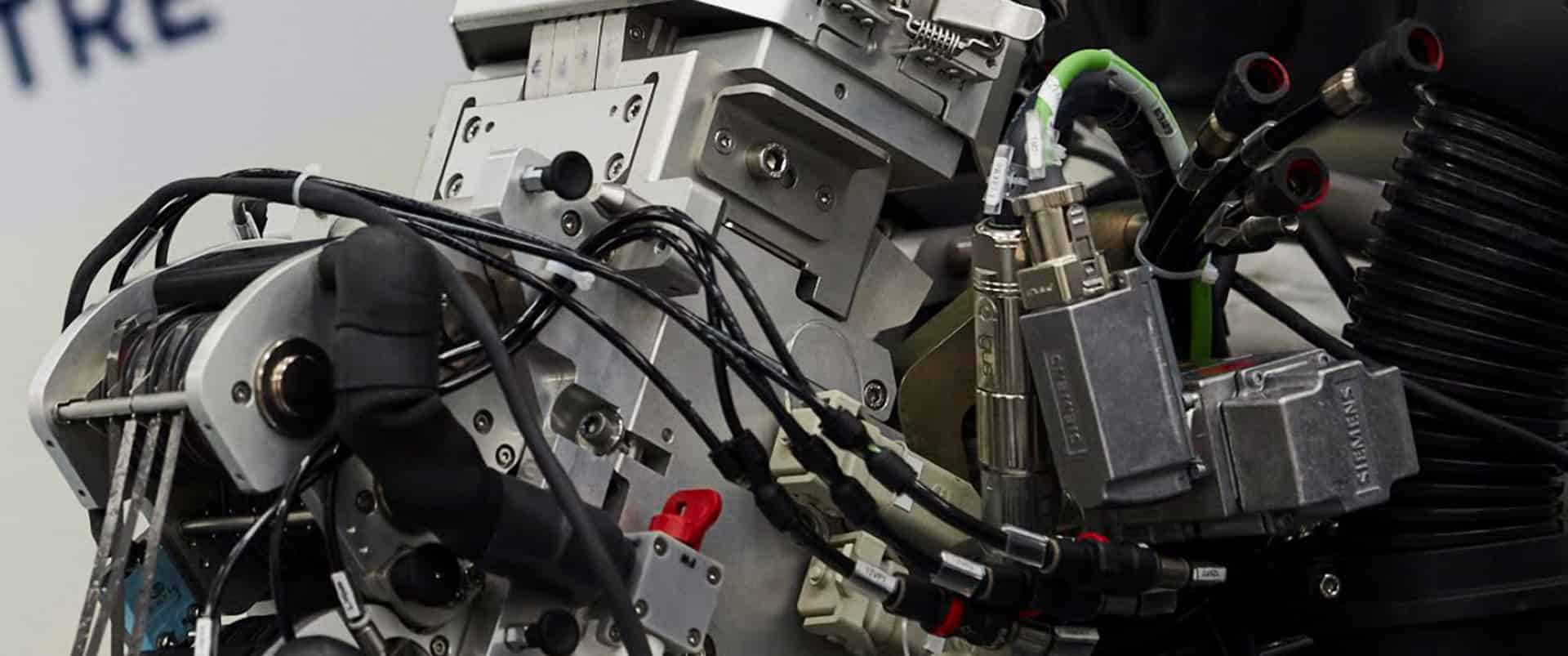
Immersive technology has transformed the digital experience by bringing together the virtual with users’ sight, sound, and even touch. Recent developments in immersive technologies have created new opportunities for businesses to use virtual reality (VR), augmented reality (AR), mixed reality (MR), haptics and more, to solve problems, seize new opportunities, and push innovation forward.
What does immersive mean?
The word ‘immersive’ is used to describe experiences that completely surround a person to make them feel part of an alternative environment - for example, immersive theatre requires the audience to interact with the set, props and actors.
In the context of technology, ‘immersive’ refers to any technologies that digitally extend or replace reality for the user; this might sound like a vague definition, but that’s because immersive technologies come in many different varieties, and as such can be used in very different contexts.
What are immersive technologies?
Immersive technologies come in three main categories, based on the extent and application of immersive experiences.
What is VR?
Virtual reality (VR) completely replaces a user’s surroundings with a digital environment using a head-mounted display (HMD) with two displays, one for each eye. The HMD also has a motion sensor to track head movements, creating a seamless visual experience. VR is often also supplemented with audio to add sound to the experience and immerse the user even more.
With VR headsets and VR-compatible consoles becoming more accessible, the video game industry has really taken advantage of immersive technology in a creative context to bring innovative experiences to users. VR has also been used for a whole range of workforce training purposes. One use case is military training, where it is used to realistically simulate dangerous environments without actually putting trainees in harm’s way, and has been used by NASA for training purposes since the 1990s.
What is AR?
Augmented reality (AR) creates an immersive experience for users by fusing reality with the virtual. Using a digital device, such as a smartphone with a camera, users are able to see, hear, and/or interact with virtual assets in real time. This technology is made possible by computer vision algorithms, which let devices ‘see’ the physical world through depth tracking, localisation and mapping; the device can then place the virtual assets in a realistic, immersive way.
AR has many applications, from highly specialised fields to everyday ‘fun’ uses. A great example is the Snapchat filter functions that place dog ears or change the shape of a user’s face - the camera maps the user’s face to determine where the digital assets need to be placed.
What is MR?
Mixed reality (MR) comes in many variations, and is usually visualised as a ‘spectrum’ between AR and VR. Like AR, mixed reality relies on computer vision technology to accurately place the digital elements according to the user’s environment, while also creating a sense of ‘presence’ for the user as with VR systems. MR devices such as HoloLens, a holographic computer worn like a headset, allow users to place virtual items in physical spaces, manipulating and interacting with them without the need for smartphone screens.
The variability and versatility of MR makes it a useful tool in many contexts. The combination of real and digital, along with the ability to seamlessly interact with virtual elements, makes this an important development for entertainment industries like film and video-games who seek to bring more interactivity to their audiences.
What is haptics?
Haptic technology is also known as ‘3D touch’ or ‘kinesthetic communication’, and unlike other examples of immersive technology, involves tactile feedback by using pressures, vibrations, and movements. These elements are all used to give the user feedback based on their actions or environment, creating an immersive experience simply through touch.
Haptics is already widespread in smartphones, using haptic vibration to silently notify users without the need for ringtones. However, haptics also have useful applications in industry contexts; the development of haptic gloves can allow users to interact with remote objects or equipment, which is especially useful in manufacturing and product development. Haptics can also be used alongside VR to immerse users through sound, sight, and touch.
Why immersive experiences or solutions?
Immersive experiences have a lot to offer in any context they’re applied to. The continued development of the aforementioned immersive technologies has already had an impact on the economy and in many industries, as it offers new ways of interacting, analysing, and creating. Here are a few examples of why immersive experiences and technologies have been applied to existing processes:
Training
From the military, to healthcare, to sports, immersive technologies have transformed the way training is done across sectors. The use of VR and AR has increased the speed and quality of training, and allows a more hands-on training experience which is very valuable and usually difficult to achieve in conventional classroom settings.
Online shopping
Immersive technologies can solve a frequent problem in online shopping - customers simply don’t know how a product will actually look when it’s in their hands. This is especially an issue in big-ticket items such as furniture; however, developments in AR technology allow prospective customers to ‘place’ the desired item in their homes, making them more confident in their purchases. Companies like Amazon and Ikea are already using AR on their online platforms for exactly this reason.
Product design and prototyping
Immersive technologies will allow product development teams to quickly and cheaply create virtual prototypes, while creating opportunities for remote collaboration. Leaps in immersive tech will continue to revolutionise product development, removing obstacles such as time, cost, and location.
How immersive is VR?
VR has come a long way since the first virtual reality HMD system in 1968. The VR systems available today use various motion sensors and localisation technologies, along with dual display and surround sound to make the VR experience as immersive as possible for users through sight and hearing.
In future, further innovation around VR and other immersive technologies will likely heighten the ‘realness’ of VR even more - perhaps, as predicted by science fiction writer Stanley G. Weinbaum in 1935, virtual reality will also include smell, touch and taste to give a completely immersive sensory experience and making “real a dream”.
This article was first published on the Digital Catapult website – with thanks for their contribution and participation in the DETI project.


